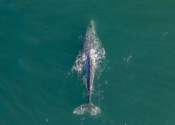New forensic analysis indicates bones were Amelia Earhart's, researcher suggests
Bone measurement analysis indicates that the remains found on a remote island in the South Pacific were likely those of legendary American pilot Amelia Earhart, according to a UT researcher.









